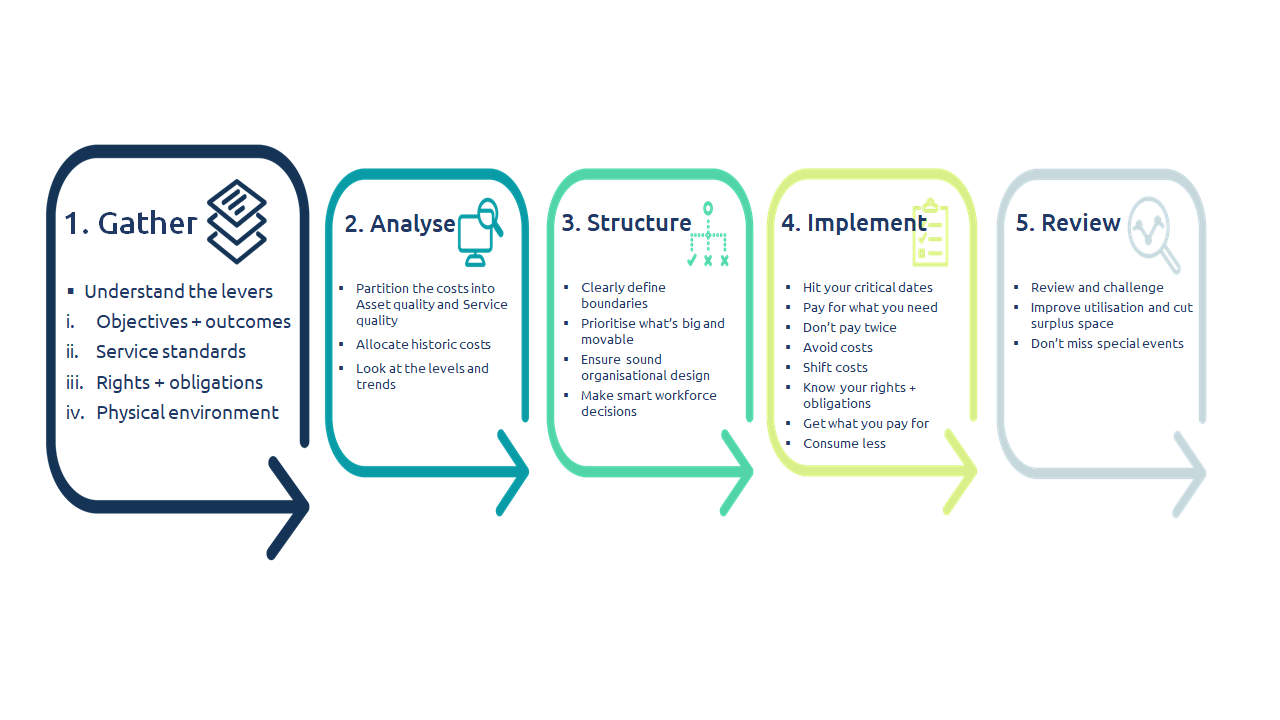
Five steps to create value and cut occupancy costs in your workplace
Five steps to create value and cut occupancy costs in your workplace
A lease expiry or major refurbishment creates opportunities to reset organisational culture, make physical changes to the way you work, and material changes to your total cost of occupancy. But opportunities to shift these levers might happen once every five or ten years. They are projects; not operational ‘business-as-usual’ events.
So, how do Corporate Real Estate, Facilities, and Workplace leaders make quick and smart operational decisions to reduce costs without losing the value planned and created by the spaces you occupy?
Here are five steps to understand the levers that impact your occupancy, analyse your costs, create the structure for a work plan to implement, manage, and review the impacts of your occupancy decisions.
At the end of the five steps, you’ll be able to figure out the total financial cost of the spaces you occupy, walk you through the operational steps you can take now to reduce your property operating expenses and still align with your organisational strategy, and identify areas of cost savings – typically ranging from 5% – 35%.
You’ll begin to create a transparent view of the health of your investments in Corporate Real Estate, Facilities, and Workplace.
Gather
In this first step you gather the data to understand the levers that impact your costs.
Start with your spend. It provides quantitative data on your business decisions.
Remember, spend is a lag indicator - it looks back at what happened. In a different discussion, that we call an Occupancy Health Check, we help you manage your lead indicators to adjust what’s inflight and have confidence in where your costs will land.
Understand the levers
Gathering the right data allows you to stand back, see the bigger picture, and understand the levers and the reasons that impact your total cost of occupancy.
Here are four levers to help you uncover the links between creating an attractive and productive corporate workplace and delivering substantial, and sustainable, cost savings.
1. Objectives and outcomes
Be clear in your organisational objectives and desired outcomes for your space. What are you looking to achieve? What is the workplace experience you’re looking to create for your people and visitors to your spaces?
You should continually test and refine your thoughts until you have a maximum of five desired outcomes for your Corporate Real Estate, Facilities, and Workplace portfolio. Then, you need to get the right measures. Clearly defined and measurable desired outcomes provide the platform for excellence in service delivery.
2. Service standards
It is important to recognise that sound cost management will relate to only one of your desired outcomes. Cost is a dominant lever. 65% of your occupancy costs are likely to relate to Gross Rent. But these are building costs. In Service standards we begin to gather information on how the spaces you occupy enable your people to do their best work.
To optimise your costs, be clear in the Service standards you require to support the workstyles and expectations of your people; and ensure efficient and effective processes to deliver that standard - no more; no less.
3. Rights + Obligations
If you’re a tenant, be sure you understand your rights and obligations under the lease. Gather details from your lease on the specific areas for cost control - tenure, options, rent, rent reviews and/or increases, outgoings (statutory and variable) carparking, as well as obligations to maintain, replace, repair, redecorate, and makegood.
4. Physical environment
Every occupancy is different. What are the key physical influences that impact the management of your space? Include the elements of size, location, and hours of operation, but look beyond to include things such as numbers of touchpoints; lockers, employees, visitors, couriers, contractors per month; and Help desk, mailroom, loading dock, and workspace utilisation.
In Step 5, we review the data gathered to describe workspace utilisation. Accordingly, the quality of your data is vital. There are now many applications that help track and record the data. Many of these applications use different words to describe the same outcome. And that’s okay, but you need to be clear in the data you gather. Your focus on gathering data should be:
- How many people (at the organisational and business unit levels) can feasibly use a workspace
- How many people (at the organisational and business unit levels) are using the space at any given time
- What are your organisational (and business unit) targets for use per workpoint
- What are your organisational (and business unit) patterns of use by the hour, day of the week, or longer.
Measures for the data will usually include point-in-time trends, peak usage data, meeting room and workstation occupancy, underutilised space, and cost per seat/head/sqm calculations.
The five steps should be in sequential order. In the next step we’ll begin to analyse the data and uncover opportunities to reduce cost.
Let us know what you think about this insights article
